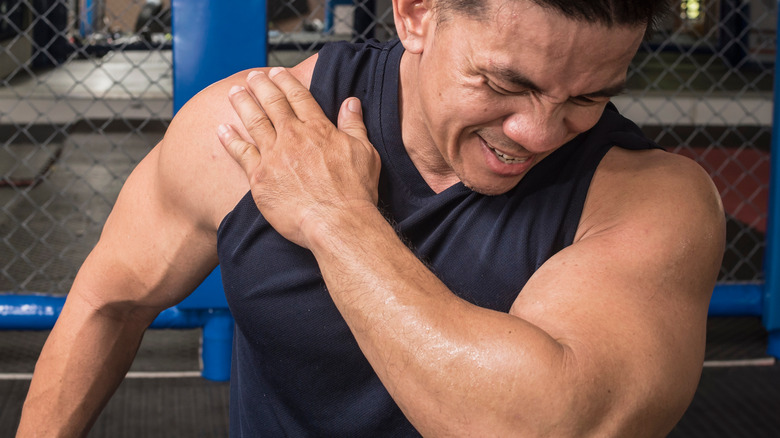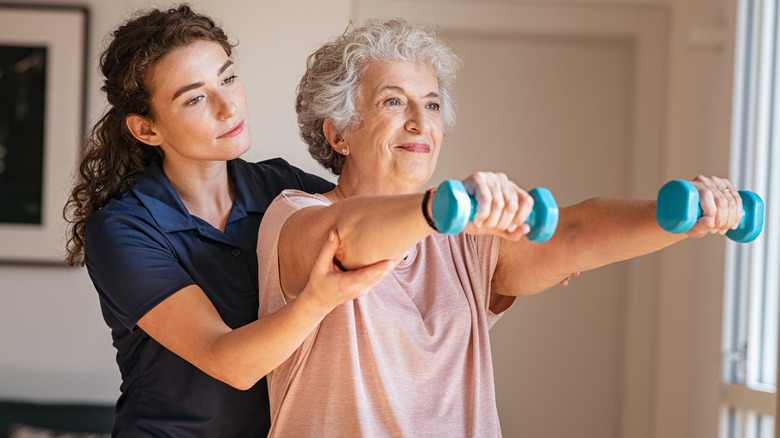What Happens When You Have A Rotator Cuff Injury
Nothing slows your roll faster than a nagging, aching pain in your shoulder. If you have a rotator cuff injury, you know that more irksome than anything is the negative effect your shoulder pain can have on your day-to-day routine. Tough workouts and kayaking adventures aside, something as simple as reaching for a glass in the top cabinet can cause you to wince.
According to the Mayo Clinic, the rotator cuff is a group of muscles and tendons that surround the shoulder joint. It is responsible for holding the upper arm bone in the socket. When a rotator cuff injury occurs as a result of inflammation or damage to the muscles or tendons, a dull ache in the shoulder can eventually become more painful with time. Additionally, rotator cuff injuries can become more common as we age. Let's take a closer look at what a rotator cuff injury looks like, why it happens, and how to best treat it.
Symptoms and causes of rotator cuff injuries
Shoulder pain is always difficult to deal with, but how do you know when it's not just another muscle knot or stiff joint? While it can look different from person to person, Johns Hopkins Medicine reports that rotator cuff tears are often accompanied by symptoms, such as recurrent shoulder pain. This may occur when engaging in certain activities, and it might also result in pain that worsens at night — often preventing you from sleeping on your injured side — cracking sounds when you move your arm, limited mobility, and muscle weakness.
While a rotator cuff injury can occur as a result of a singular incident or fall, they most commonly develop over time as a consequence of progressive wear and tear (per the Mayo Clinic). A few factors can contribute to your risk of acquiring a rotator cuff injury, including advanced age, occupations that require repetitive overhead arm motions, like house painting or bartending, participation in certain sports, such as tennis or weight lifting, and genetic predisposition.
How to diagnose and treat rotator cuff injuries
Beyond a physical exam, your doctor might recommend an X-ray or magnetic resonance imaging (MRI) to diagnose a rotator cuff tear. This can determine whether surgery is necessary, as the rotator cuff can tear both partially and fully (per Johns Hopkins Medicine).
Livestrong reports that treatment for rotator cuff tears can include rest, anti-inflammatory medications, cortisone injections, and strengthening exercises. Strengthening exercises are perhaps the most important, as they can improve mobility, increase the strength of the injured muscle, and eventually contribute to a decrease in pain. Livestrong recommends exercises like active assisted elevation and wall slides.
The former uses your non-injured arm to help get the injured shoulder moving. To do an active assisted elevation exercise, lie on your back and clasp your hands at your waist before slowly lifting both arms up toward the ceiling and over your head. When you can't go any higher without pain, pause for a moment before lowering your arms back down to your waist.
To practice wall slides, stand facing a wall with the hand of your injured arm pressed against it. You might try putting a small towel between your hand and the wall to lessen the friction. With a little bit of force, slide the towel up the wall as far as you can without causing pain, and hold it there for five seconds before sliding your hand back down to the starting position.



